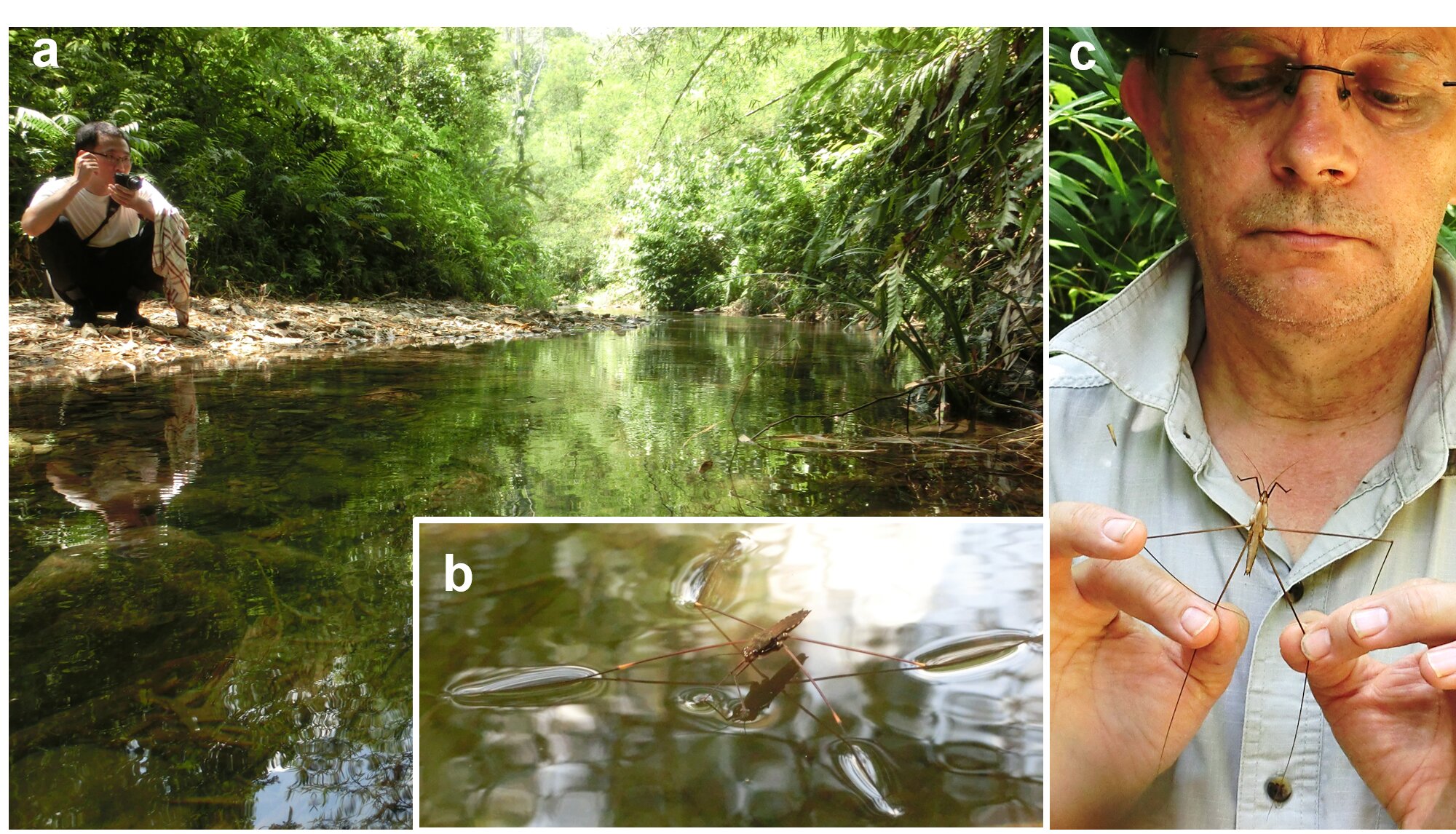Water striders live on the water surface and their leg length ranges from several to over 100 millimeters. It is well known that they use their long hydrophobic legs and support their bodies on the surface without breaking it. Under each leg, the water surface bends down creating a dimple (meniscus). Heavier water striders create deeper dimples, which produce stronger upward force from the downward stretched water surface that supports the insect body.
When water striders escape from predators attacking from under the water, they jump upward. Their jump can reach a speed above 1 m/s within just a fraction of a second (10–20 milliseconds) without breaking the water surface, and robots have been produced that imitate this behavior.
To produce those jumps, water striders move their legs fast downwards against the water surface but not too fast so that the water surface remains unbroken. In this case, each dimple works like a mini trampoline: the deeper it is pressed the stronger is the upward force making the fast jump possible.
Until recently it was thought that all water striders jump in this way. However, only several small species representing just 10% of the full range of water striders’ body sizes (10–60 mg) have been studied because they are easily available to researchers.
Recent research expeditions to study the world’s largest water striders in the subtropical forests of Vietnam, followed by mathematical modeling, have discovered a new mechanism of jumping used by the giant water strider (Gigantometra gigas) and some other large water striders exceeding the body size of about 80 mg.
Gigantometra gigas jumping in the natural habitat and the water container and the bubble sheath around the leg. Movie timeline: 1-3 s.—normal speed (1x); 4-10 s.—slowed down 8x; the clip shows two examples of upward jumps by the giant water strider and landing on the water surface (C0143). The water strider leaves the field of view in the video that was filmed at a closer distance (C0153). Movie timeline: 11-12 s.—normal speed (1x); 13-16 s.—slowed down 10x; the clip shows two examples of two different upward jumps by the giant water strider in the water container in the front (EVT16) and side view (EVT19). Movie timeline: 17-22 s.—slowed down 20x; the clip shows two examples around the leg of jumping water strider (EVT22 (2)) and dead leg striking into the water surface (C0143 dead leg). Credit: Proceedings of the National Academy of Sciences (2023). DOI: 10.1073/pnas.2219972120
2023-07-20 17:24:03
Article from phys.org rnrn
